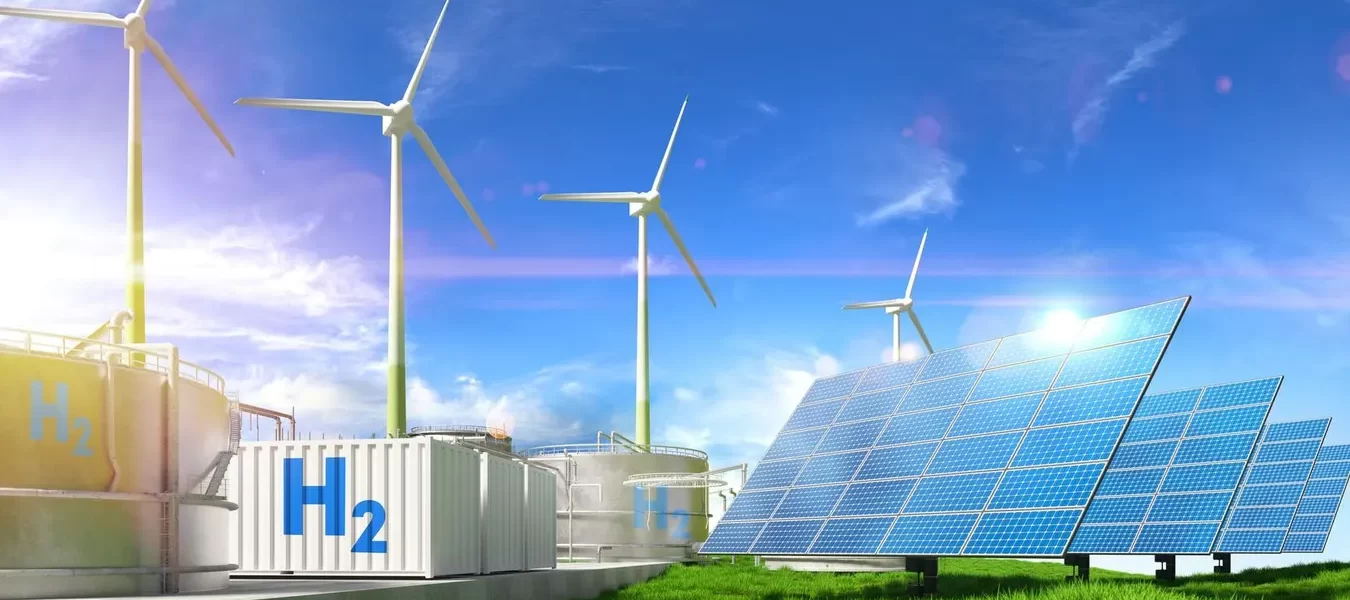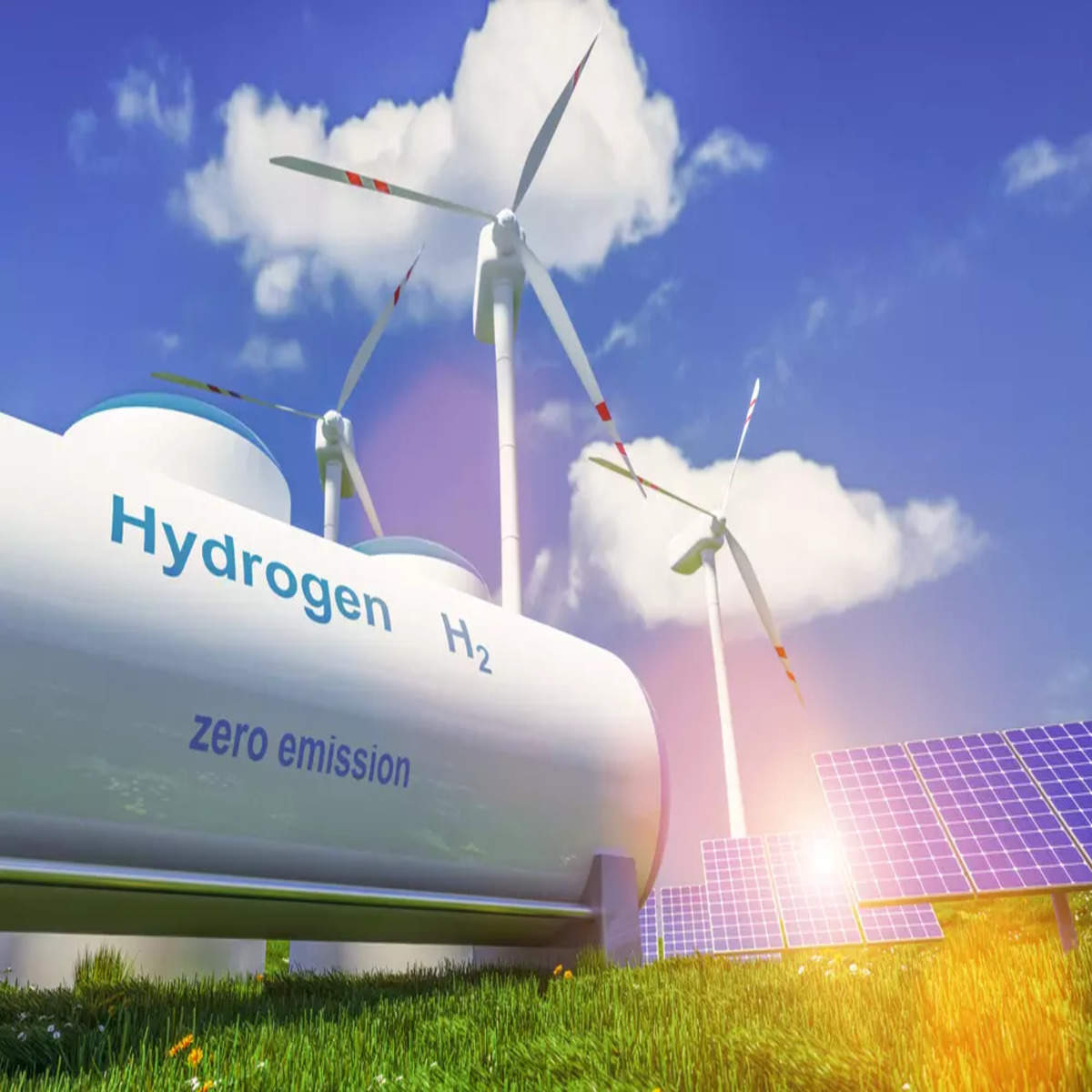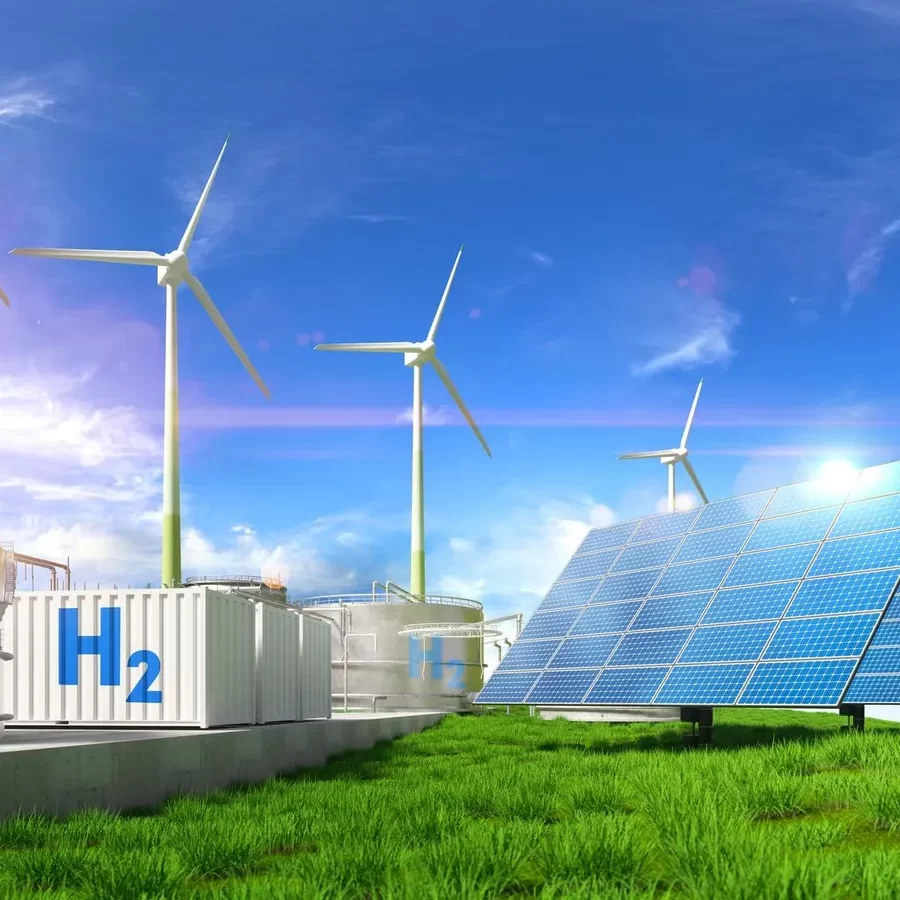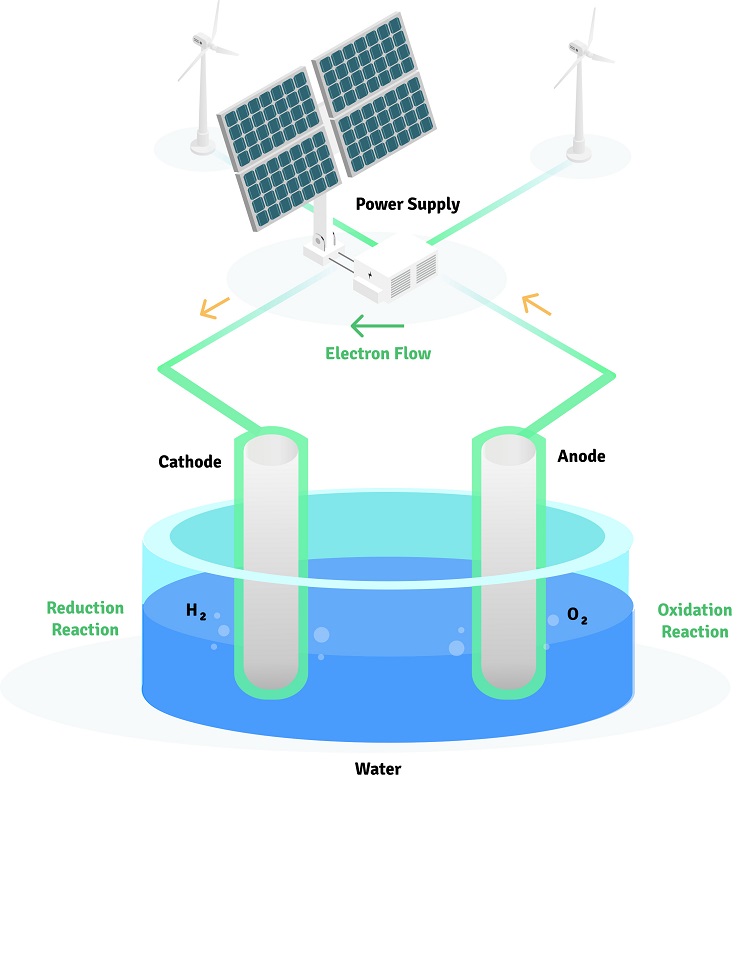Green hydrogen is a form of renewable energy that can be produced from water and sunlight and can be used to power various applications, such as transportation, industry, and electricity
Prof. Aécio D’Silva, Ph.D
AquaUniversity
Green hydrogen is hydrogen that is produced by splitting water by electrolysis, using electricity that has been generated using renewable energy sources, such as solar or wind power. This process produces only hydrogen and oxygen, and does not emit any greenhouse gases or pollutants. Green hydrogen can be used to power various applications, such as transportation, industry, and electricity, by using fuel cells, turbines, or boilers. Green hydrogen can also be stored, transported, and distributed, by using tanks, pipelines, or trucks. Green hydrogen can help reduce the dependence on fossil fuels and contribute to the decarbonization and sustainability of the energy system.
Hydrogen is the most abundant element in the universe and the simplest and lightest molecule. Hydrogen has a high energy density, which means that it can store and release a lot of energy per unit of mass. Hydrogen can also be used to produce electricity, heat, or motion, by using different devices, such as fuel cells, turbines, or boilers. Hydrogen can also be combined with other elements, such as carbon or nitrogen, to produce synthetic fuels, such as ammonia or methanol.
However, hydrogen is not a primary energy source, but an energy carrier, which means that it has to be produced from other sources of energy, such as fossil fuels, biomass, or electricity. Depending on the source and the method of production, hydrogen can have different colors, such as grey, blue, or green. The color indicates the environmental impact and the carbon footprint of the hydrogen production.
Grey hydrogen is the most common and the cheapest form of hydrogen, but also the most polluting. Grey hydrogen is produced by steam reforming of natural gas, which is a process that uses high temperature and pressure to break down methane into hydrogen and carbon dioxide. The carbon dioxide is then released into the atmosphere, contributing to global pollution. Grey hydrogen accounts for about 95% of global hydrogen production and emits about 9.3 kilograms of carbon dioxide per kilogram of hydrogen. [2]
Blue hydrogen is a cleaner form of hydrogen but still relies on fossil fuels. Blue hydrogen is produced by the same process as grey hydrogen, but with an additional step of carbon capture and storage (CCS), which is a technology that captures the carbon dioxide and stores it underground or under the sea, preventing it from reaching the atmosphere. Blue hydrogen can reduce carbon emissions by about 90%, but it still consumes a lot of energy and water and poses some risks of leakage or seepage of carbon dioxide. [3]
Green hydrogen is the cleanest and the most sustainable form of hydrogen, but also the most expensive and the most challenging to produce. Green hydrogen is produced by splitting water into hydrogen and oxygen by electrolysis, using electricity that has been generated using renewable energy sources, such as solar or wind power. This process does not produce any greenhouse gases or pollutants and only requires water and sunlight as inputs. Green hydrogen can reduce carbon emissions by 100%, and can also use excess or surplus renewable electricity that would otherwise be wasted or curtailed. [4] In this Collaborative Intelligence post, we will explain what green hydrogen is, how it is produced, and why it is important for a future clean environment.
What is Green Hydrogen
Green hydrogen is hydrogen that is produced by splitting water by electrolysis, using electricity that has been generated using renewable energy sources, such as solar or wind power. This process produces only hydrogen and oxygen and does not emit any greenhouse gases or pollutants.
Hydrogen is a gas that consists of two hydrogen atoms bonded together, forming a molecule with the chemical formula H2. Hydrogen is colorless, odorless, and tasteless, and can be compressed or liquefied for storage and transportation. Hydrogen can also be converted into other forms of energy, such as electricity, heat, or motion, by using different devices, such as:
- Fuel cells: Fuel cells are devices that convert the chemical energy of hydrogen and oxygen into electrical energy and water, by using an electrochemical reaction. Fuel cells are efficient, quiet, and reliable, and can be used to power various applications, such as vehicles, buildings, or portable devices.
- Turbines: Turbines are devices that convert the kinetic energy of a fluid, such as air or steam, into mechanical energy and electricity, by using a rotating blade or a wheel. Turbines can be powered by hydrogen, either by burning it with oxygen or by mixing it with natural gas, to produce a high-pressure and high-temperature gas that drives the turbine.
- Boilers: Boilers are devices that convert the thermal energy of a fluid, such as water or steam, into heat and electricity, by using a combustion or a heating process. Boilers can be powered by hydrogen, either by burning it with oxygen or by mixing it with natural gas, to produce a hot and pressurized fluid that heats the boiler.
Green hydrogen can be used to power various applications, such as transportation, industry, and electricity, by using fuel cells, turbines, or boilers. Green hydrogen can also be stored, transported, and distributed, by using tanks, pipelines, or trucks. Green hydrogen can help reduce the dependence on fossil fuels and contribute to the decarbonization and sustainability of the energy system.
How Green Hydrogen is Produced
Green hydrogen is produced by splitting water into hydrogen and oxygen by electrolysis, using electricity that has been generated using renewable energy sources, such as solar or wind power. This process requires a device called an electrolyzer, which consists of two electrodes, an anode, and a cathode, separated by an electrolyte, which is a substance that conducts electricity. The electrolyzer can be connected to a renewable power source, such as a solar panel or a wind turbine, or to the grid if the electricity is from renewable sources.
The process of producing green hydrogen by electrolysis can be divided into the following steps:
- Water supply: The first step is to supply water to the electrolyzer, which can be from various sources, such as tap water, rainwater, or seawater. The water quality and purity can affect the efficiency and the lifespan of the electrolyzer, so the water may need to be filtered, purified, or desalinated before entering the electrolyzer.
- Electrolysis: The second step is to split the water into hydrogen and oxygen by electrolysis, which is a process that uses electricity to break down the water molecules into their constituent elements. The electricity is applied to the electrodes, creating a positive charge at the anode and a negative charge at the cathode. The water molecules are attracted to the opposite charge and are split into hydrogen ions (H+) and hydroxide ions (OH-). The hydrogen ions migrate to the cathode, where they receive electrons and form hydrogen gas (H2). The hydroxide ions migrate to the anode, where they lose electrons and form oxygen gas (O2).
- Gas separation: The third step is to separate the hydrogen and oxygen gases from the electrolyte and from each other, by using a membrane, a separator, or a gas-liquid separator. The membrane or the separator is a thin layer of material that allows only certain ions or molecules to pass through, while blocking others. The gas-liquid separator is a device that separates the gas and the liquid phases of a mixture, by using gravity, centrifugal force, or pressure difference.[2, 4, ]
- Gas purification: The fourth step is to purify the hydrogen and oxygen gases from any impurities, such as water, dust, or other gases, by using a dryer, a filter, or a scrubber. The dryer is a device that removes the moisture from the gas, by using a desiccant, a refrigerant, or a membrane. The filter is a device that removes the solid particles from the gas, by using a mesh, a cloth, or a paper. The scrubber is a device that removes the unwanted gases from the gas, by using a chemical, a biological, or a physical process.
- Gas compression: The fifth step is to compress the hydrogen and oxygen gases to increase their pressure and density, by using a compressor, a pump, or a piston. The compressor is a device that reduces the volume and increases the pressure of the gas, by using a rotating impeller, a screw, or a diaphragm. The pump is a device that transfers the gas from a low-pressure to a high-pressure region, by using a piston, a plunger, or a vane. The piston is a device that compresses the gas by applying a force, by using a cylinder, a rod, or a spring.
- Gas storage: The sixth step is to store the hydrogen and oxygen gases for later use, by using a tank, a cylinder, or a cavern. The tank is a container that holds the gas under pressure, by using a metal, a plastic, or a composite material. The cylinder is a tube-shaped container that holds the gas under pressure, by using a steel, an aluminum, or a carbon fiber material. The cavern is a natural or artificial underground space that holds the gas under pressure, by using a salt, a rock, or a water formation.
- Gas transportation: The seventh and final step of producing green hydrogen from solar energy is to transport the hydrogen and oxygen gases to the point of use, by using a pipeline, a truck, or a ship. The pipeline is a network of pipes that carries the gas under pressure, by using a steel, plastic, or a composite material. The truck is a vehicle that carries the gas in tanks or cylinders, by using a metal, a plastic, or a composite material. The ship is a vessel that carries the gas in tanks or cylinders, by using a metal, a plastic, or a composite material. The choice of the transportation mode depends on the distance, the volume, the cost, and the safety of the gas delivery. The transportation of green hydrogen can help distribute renewable energy from solar power to various applications, such as transportation, industry, and electricity, by using fuel cells, turbines, or boilers. The transportation of green hydrogen can also help create a regional or global hydrogen market, by connecting the hydrogen producers and consumers across different countries and continents. The transportation of green hydrogen is a key component of the green hydrogen value chain and requires further research and development to improve the efficiency, reliability, and affordability of the gas delivery.
In conclusion, in this Collaborative Intelligence post, we have explained what green hydrogen is, how it is produced, and why it is important for a future clean environment. We have shown that green hydrogen is hydrogen that is produced by splitting water by electrolysis, using electricity that has been generated using renewable energy sources, such as solar or wind power. This process produces only hydrogen and oxygen and does not emit any greenhouse gases or pollutants. Green hydrogen can be used to power various applications, such as transportation, industry, and electricity, by using fuel cells, turbines, or boilers. Green hydrogen can also be stored, transported, and distributed, by using tanks, pipelines, or trucks. Green hydrogen can help reduce the dependence on fossil fuels and contribute to the decarbonization and sustainability of the energy system. Green hydrogen is a form of renewable energy that can be produced from water and sunlight and can be used to power various applications, such as transportation, industry, and electricity. Green hydrogen is a clean and sustainable energy source that can make a positive difference for the planet and the people.
References:
[1] Knidt, J., D’Silva, Aecio. (2021) Coloring the Future Green. Moura Enterprises Publishing House. Amazon books.
[2] Purtill, J. (2021). What is green hydrogen, how is it made and will it be the fuel of the future? ABC Science. https://www.abc.net.au/news/science/2021-01-23/green-hydrogen-renewable-energy-climate-emissions-explainer/13081872.
[3] Malayil, J. (2023). This MIT system can harness solar energy to produce green hydrogen. Interesting Engineering. https://interestingengineering.com/innovation/this-mit-system-can-harness-solar-energy-to-produce-green-hydrogen.
[4] Paleja, A. (2023). Green hydrogen: the future of clean energy?. Interesting Engineering. https://interestingengineering.com/innovation/green-hydrogen-future-clean-energy.







